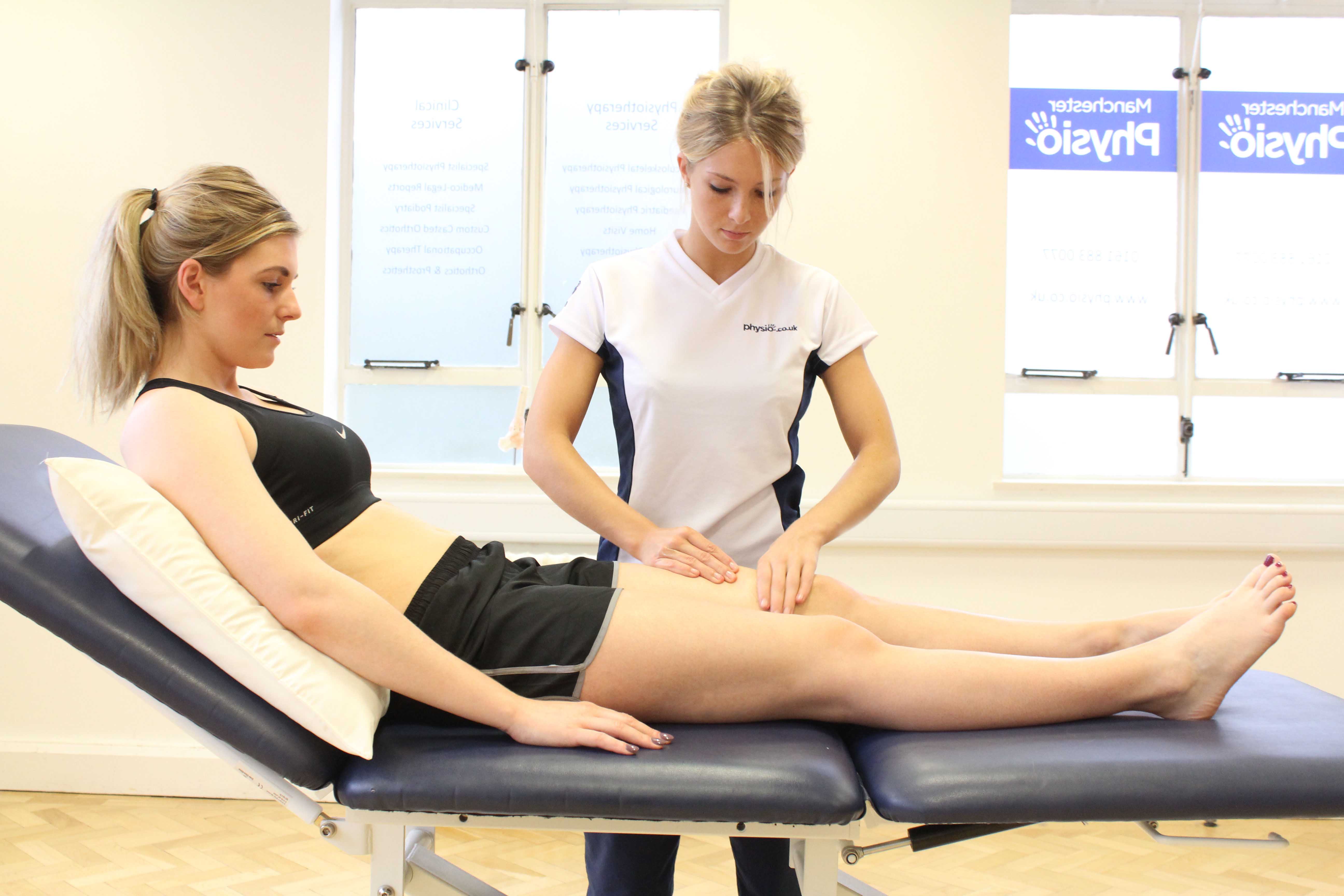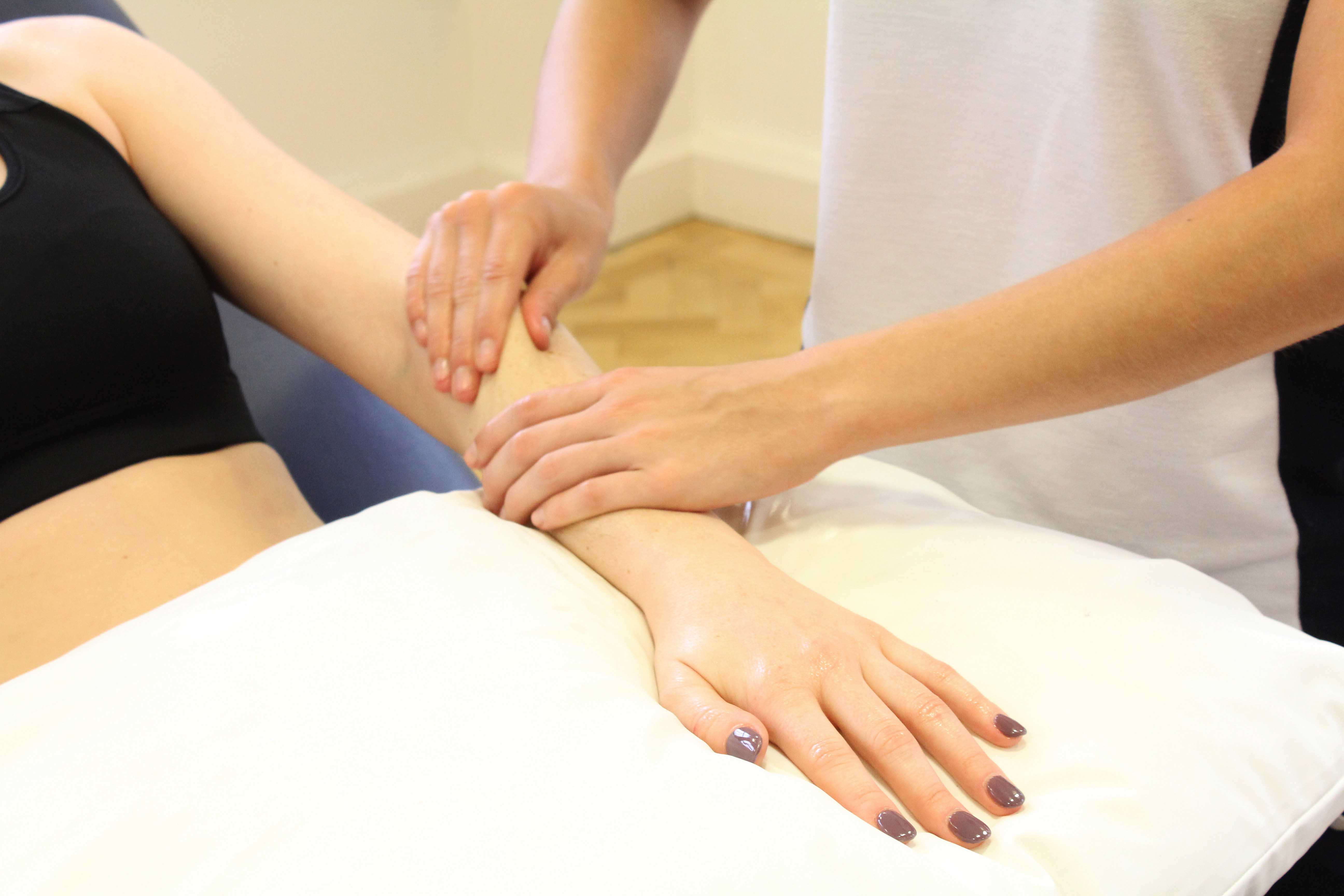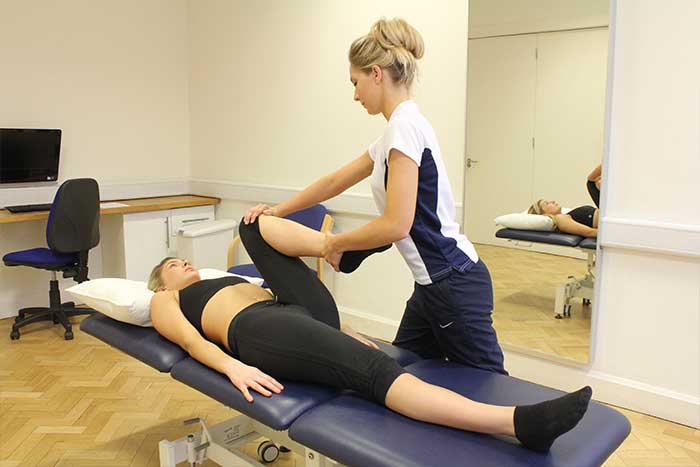Massage can play an important role in the process of injury rehabilitation. Massage encourages blood circulatory movement and relaxes muscles. Massage helps to deliver more oxygen and nutrients to soft tissues and organs. An increase of vital nutrients into the tissues accelerates the healing rate of injured areas. Massage can help a range of injuries including sprains, strains, broken bones and muscles tears. Using a variety of massage techniques, massage can stretch out tightness and loosen scar tissue. Using massage as part of injury rehabilitation can increase healing rate and shorten recovery time. Massage therapists working at Physio.co.uk provide effective massage treatments during recovery after injury.
What type of massage is used post injury?
There are many types of massage that can be used post injury. The types of massage used post injury are:

When can massage help post injury?
Massage can help treat soft tissues post injury. The circumstances when massage can help post injury are:
 Above: Post injury massage of rectus femoris muscle to aid recovery
Above: Post injury massage of rectus femoris muscle to aid recoveryMany types of massage are used post injury to help relieve acute pain. Acute pain can be left in the muscles and soft tissues after injury. Pain can be caused due to muscle tightness and fascia restrictions after injury. When injury occurs, muscles act as a protective mechanism and tighten around an area of injury. Fascia is connective tissue located under the skin. Restrictions in the fascia tissue can become tight due to scar tissue and lack of range of movement. Massage helps to manage tightness and helps to restore blood circulation in the tissues.
Massage is used to treat tight muscles post injury. Muscles commonly tighten after injury which leads to restrictive movements. Injury can affect a muscle's optimum length which results in an increase of tightness. Muscles are made up of overlapping fibres. If a muscle is tight, fibres overlap too much causing lack of flexibility. Massage can help increase the temperature of tissues to loosen and stretch them. Stretched fibres allow muscles to function better and injury recovery to be improved.
Massage is an effective treatment to reduce scarring after injury. Scarring is the natural healing process of damaged tissues. The body produces collagen fibres and sends them to repair around an injury site. Collagen fibres differ in texture to normal tissue fibres. Collagen is tough in texture and lays across the direction of muscle fibres. Scarring can be restrictive and aggravate to cause pain. Massage uses specialised techniques to loosen, break down and realign collagen fibres. Reduced scar tissue increases normal function of soft tissues, decreasing pain and tightness.
What are the physiological effects of receiving a massage post injury?
Massage can produce many important physiological effects on the body. The physiological effects of massage after injury include:
 Above: post injury massage of extensor capri ulnaris and digitorum to aid recovery.
Above: post injury massage of extensor capri ulnaris and digitorum to aid recovery.When a massage is used to treat injury, it helps to increase capillarisation. Capillarisation is the increased size of blood vessels. The larger size of blood vessels allows more blood to flow through the body. Capillarisation happens during massage by creating friction against the skin and increasing temperature. Increased capillarisation in the circulatory system is beneficial to improve the amount of blood being delivered to the area of injury. Increased blood flow transports more oxygen and nutrients to help assist with the repair of damaged cells. Massage helps to speed up the recovery period after an injury.
Receiving a massage for an injury helps break down scar tissue. Scar tissue is part of the body's healing process. Normal skeletal muscle tissue is formed of collagen that sits in a parallel direction so that it allows good contraction and flexibility. When an injury occurs, the body produces excess collagen. The initial production of collagen provides protection and strength to an injury site. However, the excess production leads to poor structural organisation of the tissue that leads to a lack of flexibility. The disruptive distribution of scar tissue commonly causes pain and often dysfunction.
Massage helps to increase tissue elasticity. Intense training can lead to hard and inelastic muscles and lead to poor efficiency. Massage increases tissue elasticity by increasing blood flow to the tissues. More blood flow in the tissues increases the temperature so that muscle fibres are looser and can be stretched. Specific massage techniques are used to elongate muscle tissues. The increase of elasticity provides more flexibility and range of movement around a joint.

What are the benefits of receiving massage post injury?
Massage post injury has many benefits. The benefits of massage post injury include:
Receiving a massage increases healing. By stimulating the blood flow, massage assists the healing process of damaged tissues. Massage increases tissue permeability so that blood, oxygen and nutrients reach damaged areas to speed up the healing process. Massage increases the flow of nutrients and enables them to be passed through tissues more easily. Massage is specifically used to increase healing after intense or strenuous exercise. Massage helps to remove metabolic wastes, specifically lactic acid. By removing wastes out of the muscles quickly, it reduces damage to any tissues and speeds up recovery.
A benefit of massage is improved recovery. Massage helps facilitate recovery from injury, surgery or exercise. Massage helps aid blood circulation throughout the body. Improved blood circulation allows damaged and tense muscles to be filled with oxygen-rich blood so healing can be enhanced. Massage encourages more blood circulation by many massage techniques that help blood through congested areas. Motions created from massage also flush out waste products from the muscles and increase the circulation of lymph fluid which carries wastes away from the muscles.
Massage encourages relaxation of muscles and provides increased range of movement. As muscles relax and loosen the range of movement around a joint increases. Muscles work in antagonistic pairs across joints. Antagonistic pair refers to each muscle of the pair pulling opposite to its antagonist. When muscles tense, muscles contract and shorten pulling the antagonist pair across the joint. Tension reduces the potential range of movement at the joint. Massage allows antagonist muscles to relax, allowing them to elongate. As the opposing muscle loosens, the range of movement increases.
Summary
Massage plays an important role to the rehabilitation stage of injury. Massage can help a range of injuries including sprains, strains, broken bones and muscles tears. Many types of massage can be used to treat injuries. The most common types of massage used for injury include remedial massage, Swedish massage, deep tissue massage and sports massage. Massage can assist after injury by helping pain, tight muscles and the breakdown of scar tissue. Massage helps treat injuries by increasing capillarisation in the blood, breaking down and realigning collagen fibres and increasing tissue elasticity. Massage therapists working at Physio.co.uk provide massages as part of the rehabilitation stage of injuries so that healing is enhanced and recovery is increased.
How can I arrange a massage to help after injury?
The easiest way to arrange a massage to help post injury at Physio.co.uk is to email us at office@physio.co.uk or call us on 0800 033 7800.
You can also book an appointment online and save £10

 0330 088 7800
0330 088 7800



































